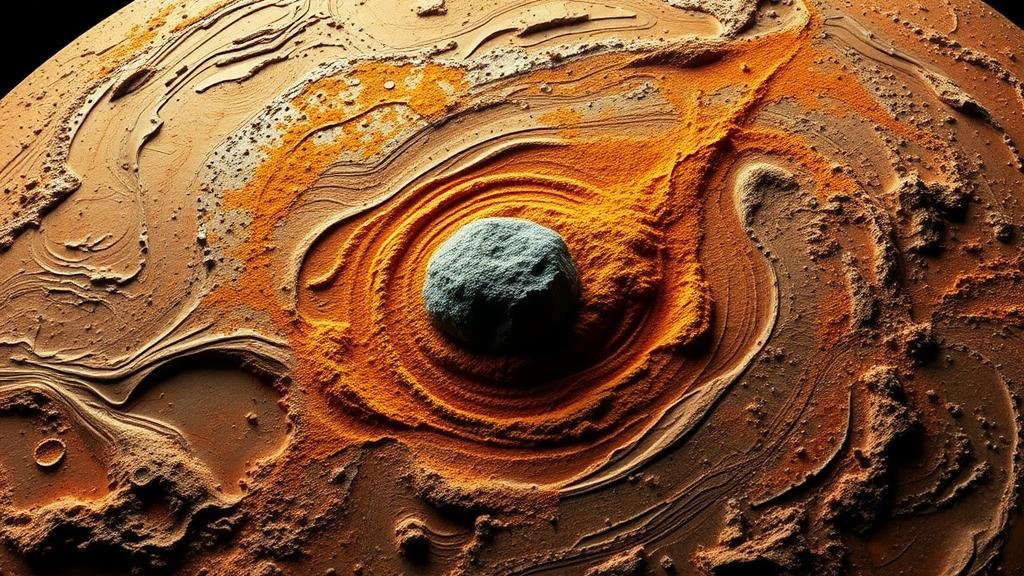How AI Predicts Meteorite Landing Zones Based on Historical Impact Data
How AI Predicts Meteorite Landing Zones Based on Historical Impact Data
Artificial Intelligence (AI) has revolutionized numerous fields, including atmospheric sciences and impact hazard assessment, by enabling researchers to analyze vast datasets efficiently. One compelling application is predicting meteorite landing zones, leveraging historical impact data to enhance accuracy and reliability. This article explores the methodologies, algorithms, and real-world implications of using AI for this purpose.
Understanding Meteorite Impacts
Meteorites are space debris that survive entry through Earths atmosphere and land on its surface. Historically, meteorite impacts have been documented, with significant instances including:
- The Tunguska Event in 1908, which devastated approximately 2,000 square kilometers of Siberian forest.
- The Chelyabinsk meteor in 2013, which exploded in Russia, injuring over 1,600 people and damaging 7,000 buildings.
These events highlight the importance of studying meteorite impacts, as they can cause extensive damage and loss of life. Plus, according to the Near Earth Object Program data, over 25,000 near-Earth objects (NEOs) currently exist, necessitating a systematic approach to predicting potential landings.
Data Collection and Historical Impact Analysis
To predict meteorite landing zones, a comprehensive database of historical impact events is critical. Data sources include:
- National Aeronautics and Space Administration (NASA) databases
- The Meteoritical Society’s catalog of meteorites
- Global meteorological data that may influence trajectories
By compiling this data, researchers apply statistical methods to identify patterns, such as regions with a high frequency of impacts. For example, the area of Arizona in the United States is notable for its meteorite activity, with over 100 impact sites recorded.
Artificial Intelligence Framework
AI algorithms used in predicting meteorite landing zones primarily fall into two categories: supervised and unsupervised learning. Supervised learning employs labeled datasets, allowing algorithms to learn from historical impacts, whereas unsupervised learning identifies patterns in unlabeled data.
Common AI techniques include:
- Machine Learning Algorithms: Methods like decision trees and support vector machines analyze datasets to classify potential landing zones based on historical similarities.
- Neural Networks: Deep learning models process complex data inputs, such as atmospheric conditions and trajectory paths, considerably improving prediction outcomes.
According to a study published in the Journal of Geophysical Research, an artificial neural network yielded an accuracy rate of 85% in predicting landing zones when tested against archival records.
Real-World Applications
The implications of successfully predicting meteorite landing sites are substantial. Applications include:
- Government Preparedness: By anticipating potential impact zones, authorities can develop emergency response strategies, particularly in populated areas.
- Astronomy and Space Exploration: Predictive models assist scientists in planning space missions and understanding the distribution of materials from space.
In practical terms, NASA utilizes AI in its Near Earth Object Observations program to mitigate risks associated with asteroid impacts by identifying potential threats years in advance.
Challenges and Limitations
Despite advances in AI-driven predictions, challenges remain. e include:
- Data Bias: Historical impact data may overrepresent certain geographic regions, leading to biased predictions.
- Complexity of Variables: The numerous factors influencing meteorite entry, such as atmospheric conditions and orbital mechanics, complicate model accuracy.
Continuous refinement of datasets and prediction algorithms is essential to enhance the effectiveness of AI in this field.
Conclusion
The integration of AI in predicting meteorite landing zones, grounded in historical impact data, represents a significant advancement in risk assessment and public safety. By utilizing machine learning and neural networks in conjunction with comprehensive datasets, researchers can improve identification accuracy and better prepare for potential future impacts. As technology evolves and datasets expand, the ability to predict such events with greater precision will likely become an essential tool in planetary defense strategies.
Going forward, enhanced cooperation between governmental agencies, academic institutions, and private sectors is key to fostering advancements in predictive technologies to safeguard against the associated risks of meteorite impacts.


